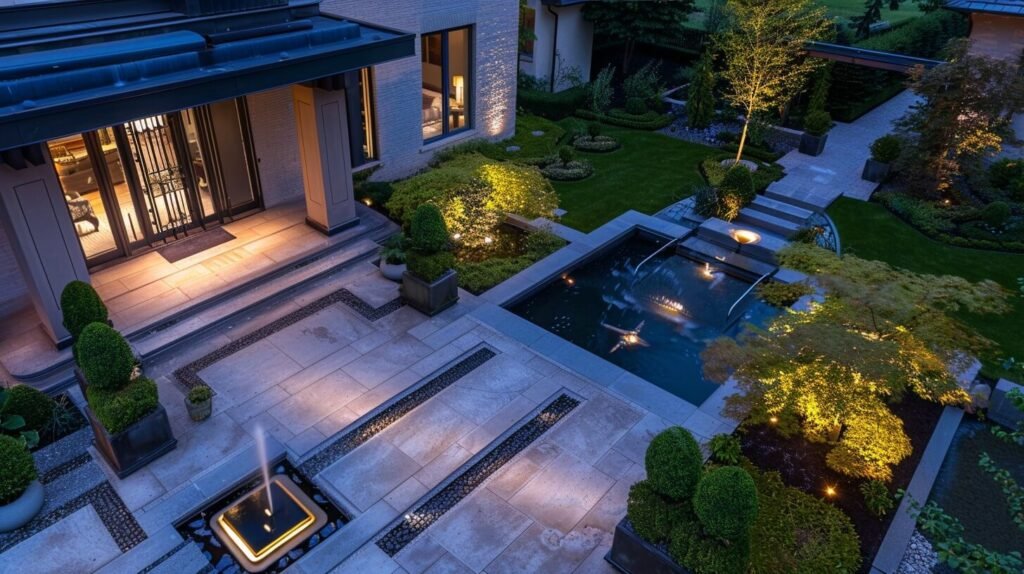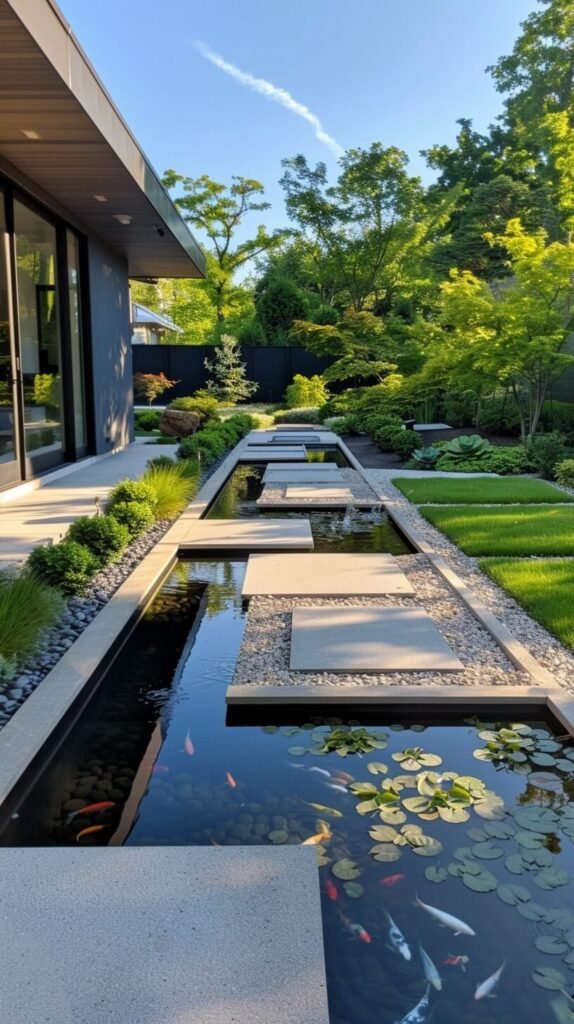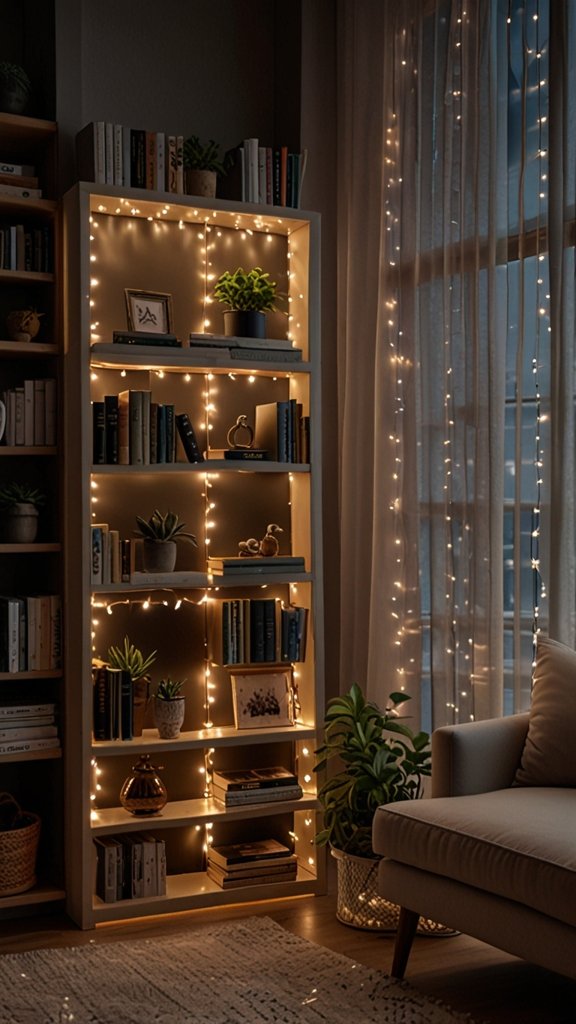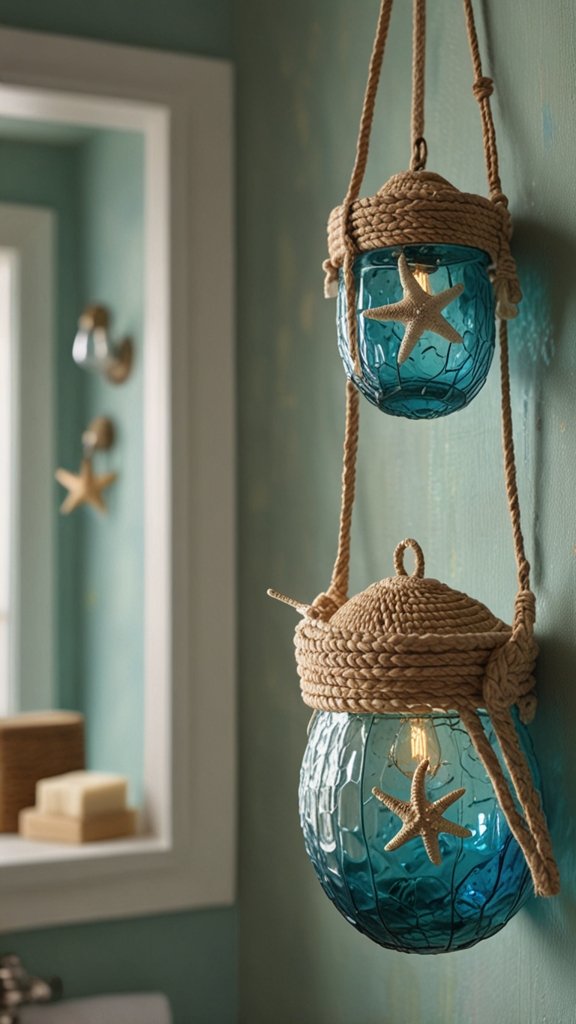The gentle sound of flowing water and the magical glow of strategically placed lighting can transform any outdoor space into a nighttime retreat. Transforming Your Water Features with Solar Lights, I’ve spent years helping homeowners enhance their gardens, and I can tell you firsthand that nothing creates ambiance quite like illuminated water features.
A recent landscape design study revealed that 78% of homeowners consider outdoor lighting one of their most desired features – and when combined with water elements, the results are simply spectacular!

What Are the Best Ways To Transform Your Water Features with Solar Lights?
Choosing the right solar lights for your water features isn’t just about picking the brightest option available at Amazon or any other stores. As a landscaping enthusiast who’s experimented with countless lighting solutions.
I’ve discovered that success lies in understanding the unique characteristics of different solar lighting options and how they interact with various water features.
Understanding Solar Light Types for Water Features
When it comes to illuminating your fountain, pond, or waterfall, you’ll encounter several distinct categories of solar lights. Floating solar lights dance gracefully on the water’s surface, creating a mesmerizing display that shifts with every ripple.
Submersible lights, nestled beneath the water’s surface, cast an ethereal glow that transforms your water feature into a luminous jewel after sunset. Meanwhile, spotlights positioned around the perimeter can create dramatic shadows and highlights that emphasize your water feature’s best attributes.
Color-Changing Technology and Modern Innovations
Today’s solar-powered lighting systems have come remarkably far from the dim, short-lived options of the past. Modern LED technology combined with advanced solar charging capabilities means you can enjoy brilliant illumination that lasts throughout the night.
Color-changing options add another dimension to your display, allowing you to create different moods for various occasions or seasons.
Installation Techniques for Optimal Performance

Successfully installing solar lights around your water features requires careful planning and consideration of several key factors.
The process isn’t just about placing lights wherever they look good – proper positioning can make the difference between a stunning display and a disappointing outcome.
Strategic Placement for Maximum Impact
The first rule of solar light installation is ensuring adequate sunlight exposure for charging. Position your solar panels where they’ll receive at least 6-8 hours of direct sunlight daily.
This might mean placing the panel separately from the light itself, using the provided extension cables to achieve optimal positioning while maintaining your desired lighting effect.
Safety and Durability Considerations
When working with water features, select lights rated for underwater use if you plan to submerge them. Check for lights with an IP68 rating, which indicates complete protection against water ingress.
Securing all cables properly helps to prevent tripping hazards and protect connections from water exposure.

Creative Design Strategies for Enchanting Displays
Transforming your water feature into a nighttime focal point requires more than just adding a few lights – it’s about creating a cohesive design that enhances your outdoor space’s overall aesthetic.
Layering Light for Dynamic Effects
The most captivating water feature displays often incorporate multiple layers of light. Start with base lighting to illuminate the water then add accent lighting to highlight surrounding landscaping or architectural features.
Finally, consider adding feature lighting to emphasize specific elements like waterfalls or fountain sprays.
Seasonal Adaptations and Special Occasions
One of the joys of solar-powered lighting is its flexibility. As seasons change, you can easily adjust your lighting scheme to create different effects.
During winter, focus lights on ice formations for dramatic effect.
In spring and summer, highlight the lush surrounding vegetation.
For special occasions, temporarily add colored lights or additional fixtures to create a festive atmosphere.
Maintenance and Longevity Tips Of Solar Lights
Maintaining your solar-powered water feature lighting doesn’t have to be complicated, but regular attention will ensure optimal performance and longevity.
Regular Cleaning and Inspection Routines
You have to develop the habit of checking your solar lights weekly during the growing season. Clean solar panels with a soft cloth to remove dust and debris that can reduce charging efficiency.
For submerged lights, gently remove any algae buildup that might dim their output. Please pay special attention to seals and connections, ensuring they remain watertight.
Seasonal Maintenance Requirements
As seasons change, so do your maintenance needs.
Before winter, consider removing submersible lights from areas that might freeze, or ensure they’re rated for ice exposure.
Clean and store floating lights that won’t be used during colder months.
Spring is the perfect time for a thorough system check and cleaning before the outdoor entertainment season begins.
Maximizing Energy Efficiency and Performance Of solar Lights
Getting the most from your solar lighting system requires an optimal understanding of how every component of your solar lights works.
Understanding Solar Charging Cycles
As we all know solar lights work best when they receive consistent, direct sunlight during peak hours. Positioning the panels to face south in the Northern Hemisphere, angled to maximize exposure during middle-of-the-day sun. Consider seasonal sun path changes when planning permanent installations.
Battery Life and Replacement Timing
Most solar lights use rechargeable batteries that eventually need replacement, typically every 1-2 years depending on usage, quality, and type of battery.
Watch for decreased runtime or dimming signs that batteries might need attention. Investing in high-quality replacements can significantly improve performance.

Troubleshooting Common Issues Of Solar Lights
Even the best-planned solar lighting systems can encounter occasional problems. Understanding common issues and their solutions helps maintain a consistently beautiful display.
Addressing Lighting Performance Problems
If you notice reduced brightness or runtime, first check for obvious issues like dirty solar panels or obstructed light sensors.
Sometimes, Relocating a light or its solar panel can dramatically improve performance. For submersible lights, ensure water clarity isn’t affecting light output.
Weather-Related Challenges
While most solar lights are designed to withstand various weather conditions, extreme weather can impact performance. During extended cloudy periods, you might notice reduced runtime. Consider backup battery options for crucial lighting elements during these times.
Environmental Benefits and Energy Savings
Choosing solar light for your water features offers significant environmental advantages while reducing operating costs. The initial investment in quality solar lighting typically pays for itself through eliminating electricity costs within the first year, while simultaneously reducing your carbon footprint.
Looking Ahead| Future Trends in Solar Water Feature Lighting
As technology behind solar lighting continues to evolve rapidly. New developments in LED efficiency, battery storage capacity, and solar panel technology promise more impressive and reliable lighting options in the coming years.
Smart technology integration is also becoming more common, allowing automated control and programming of lighting effects.
Whether enhancing a small fountain or illuminating a grand waterfall, solar-powered lighting offers an eco-friendly, cost-effective way to create stunning nighttime displays.
By carefully selecting appropriate lights, planning their installation, and maintaining them properly, you can create an outdoor environment that enhances your property’s beauty and value while providing endless enjoyment for years.
FAQS About Solar Lights for Water Features
How Long Do Solar Lights Last Around Water Features?
With proper maintenance, quality solar lights can last 3-5 years around water features. The LED bulbs themselves typically last 50,000+ hours, but the rechargeable batteries usually need replacement every 12-18 months.
Waterproof seals may also need attention every couple of years, depending on water exposure and environmental conditions. Regular maintenance can significantly extend their lifespan.
Are Solar Lights Bright Enough for Large Water Features?
Modern solar lights can illuminate large water features effectively! Today’s LED technology, combined with improved solar panels and battery storage, provides impressive brightness levels.
For larger features, consider using multiple lights or opt for high-output models specifically designed for water features. Most quality solar spotlights now produce between 200-600 lumens, comparable to traditional electric lighting.
Can Solar Lights Work in Shaded Areas Around My Water Feature?
While solar lights work best with direct sunlight, many modern models can still function effectively in partially shaded areas.
The key is separating the solar panel from the light fixture using extension cables, allowing you to place the panel in a sunny location while keeping the light where you need it. Some advanced models even work with as little as 4 hours of indirect sunlight.
What Maintenance Do Solar Water Feature Lights Need?
Regular maintenance is fairly simple but essential. Clean the solar panels monthly with a soft cloth to remove dust and debris. For submerged lights, check for algae buildup every few weeks during warm months.
Inspect seals and connections quarterly, and clean any calcium deposits that might accumulate from water spray. During winter, either remove the lights or ensure they’re rated for freezing conditions.
How Can I Prevent Algae Growth on Underwater Solar Lights?
Preventing algae buildup starts with choosing lights with smooth, non-porous surfaces. Regular cleaning with a mild vinegar solution can help deter algae growth. Some manufacturers also offer lights with special anti-algae coatings.
Additionally, maintaining proper water chemistry in your feature can significantly reduce algae problems on both the lights and the water feature itself.
Will Solar Lights Work During Winter Months?
Solar lights can work during winter, though with reduced performance in most regions. They’ll receive less sunlight and may have shorter run times due to shorter days. Choose lights with efficient monocrystalline solar panels and high-capacity batteries for the best winter performance.
Some users opt to supplement with backup battery power during particularly dark winter periods.
How Do I Choose the Right IP Rating for Water Feature Lights?
For water features, always look for lights rated IP67 or IP68. IP67 is suitable for temporary submersion, while IP68 is rated for continuous underwater use. For lights that will be placed around but not in the water, IP65 or IP66 ratings will suffice as they protect against water spray and heavy rain.
Remember that higher IP ratings often indicate better overall build quality and longevity.
Can I Mix Different Types of Solar Lights Around My Water Feature?
Absolutely! Combining different types of solar lights often creates the most dynamic and interesting displays. Try mixing submersible lights for underwater illumination with spotlights for highlighting water movement and floating lights for surface effects.
Just ensure the brightness levels and color temperatures complement each other for a cohesive look.
What Should I Do If My Solar Lights Stop Working?
Before replacing any solar lights, go through a basic troubleshooting process. First, thoroughly clean the solar panels and light fixtures. Check that the solar panel is receiving adequate sunlight and isn’t obstructed.
Test the lights with fresh rechargeable batteries, as battery failure is the most common issue. Inspect all seals and connections for water damage. If these steps don’t resolve the issue, contact the manufacturer – many quality solar lights come with 1-2 year warranties.
How Can I Create Different Moods with Solar Water Feature Lights?
Creating different moods is possible through strategic placement and light selection. Use warm white lights (2700-3000K) for a cozy, intimate atmosphere or cool white lights (5000-6500K) for a more modern, crisp look.
Color-changing lights offer endless possibilities for different occasions. Layer lighting by combining underwater lights with above-water spotlights, and consider using timers or smart controllers to adjust lighting patterns throughout the evening.
Are Solar Lights Cost-Effective for Water Features?
When comparing long-term costs, solar lights typically prove very cost-effective. While the initial investment might be higher than traditional electric lights, you’ll save on electricity costs and complex wiring installation.
Most users recoup their investment within 1-2 years through energy savings. Plus, modern solar lights require minimal maintenance costs beyond occasional battery replacement.
What’s the Best Time to Install Solar Lights in Water Features?
Spring is typically the ideal time to install solar lights in water features. The moderate temperatures make working with water more comfortable, and you’ll have time to adjust and optimize the setup before peak summer use.
However, installation can be done any time the water feature is accessible and temperatures are above freezing. Just ensure you’ll have several clear days after installation to test and adjust the lighting positions.



